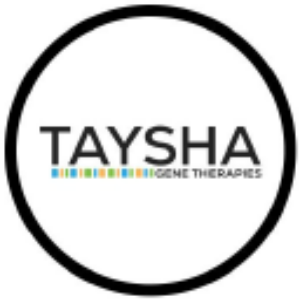Taysha Gene Therapies to Present Biodistribution Data from an Analysis Evaluating AAV9 Gene Therapy Delivery at the Upcoming 31st Annual ESGCT Congress
Rhea-AI Summary
Taysha Gene Therapies will present biodistribution data from an analysis of 28 non-human primates (NHPs) at the 31st Annual ESGCT Congress in Rome. The analysis, spanning five studies, evaluated AAV9 gene therapy vector delivery using intrathecal (IT) and intra-cisterna magna (ICM) administration.
Key findings include:
- Lumbar IT administration led to widespread and consistent biodistribution across brain and spinal cord regions
- IT and ICM administration achieved comparable biodistribution in NHPs
- Results support IT administration as an effective, safe, and minimally invasive approach for delivering AAV-based gene therapies for CNS diseases in children and adults
The data reinforces Taysha's clinical development strategy, particularly for their TSHA-102 program targeting Rett syndrome. The poster presentation, titled 'Broad CNS Biodistribution of AAV9-based Gene Therapies Delivered by Intrathecal Lumbar Puncture in Non-Human Primates,' will be presented on October 23, 2024.
Positive
- None.
Negative
- None.
News Market Reaction 1 Alert
On the day this news was published, TSHA declined 1.49%, reflecting a mild negative market reaction.
Data tracked by StockTitan Argus on the day of publication.
Data from an analysis of five NHP studies showed lumbar IT administration led to widespread and consistent biodistribution of AAV9 gene therapy vectors across brain and spinal cord regions
IT and ICM administration achieved comparable biodistribution across brain and spinal cord regions in NHPs
Findings from the analysis reaffirm the clinical potential of IT administration as an effective, safe and minimally invasive approach to deliver AAV-based gene therapies designed to treat CNS diseases in both children and adults
DALLAS, Oct. 22, 2024 (GLOBE NEWSWIRE) -- Taysha Gene Therapies, Inc. (Nasdaq: TSHA) (Taysha or the Company), a clinical-stage biotechnology company focused on advancing adeno-associated virus (AAV)-based gene therapies for severe monogenic diseases of the central nervous system (CNS), today announced that it will present biodistribution data from an analysis of 28 non-human primates (NHP) evaluating the delivery of AAV9 gene therapy vectors across five different studies using intrathecal (IT) delivery by lumbar puncture (four studies) or intra-cisterna magna (ICM) injection (one study). The data will be presented during a poster presentation at the upcoming 31st Annual Congress of the European Society of Gene & Cell Therapy (ESGCT), taking place in Rome, Italy from October 22-25, 2024. These findings reinforce Taysha’s clinical development approach utilizing IT administration to deliver AAV-based gene therapies designed to treat the genetic root cause of CNS diseases, including the TSHA-102 program in clinical evaluation for children, adolescents and adults living with Rett syndrome.
“Findings from an analysis across five NHP studies showed that both IT and ICM administration led to comparable, consistent and widespread biodistribution of AAV9 vector throughout the brain and spinal cord regions,” said Sukumar Nagendran, M.D., President and Head of Research & Development at Taysha. “Importantly, these findings further support the clinical potential of IT administration as an effective, safe and minimally invasive delivery approach for broad targeting of the CNS that has potential for outpatient use in both children and adults. We believe the NHP biodistribution data, together with our additional preclinical data, reaffirm our clinical development strategy utilizing IT administration and provide translational support for the broad clinical effect reported following treatment with TSHA-102 in both our REVEAL adolescent/adult trial and REVEAL pediatric trial."
Poster presentation details are as follows:
Title: Broad CNS Biodistribution of AAV9-based Gene Therapies Delivered by Intrathecal Lumbar Puncture in Non-Human Primates
Presenters: Nino Devidze, MS, Ph.D., Clinical Development Lead and Emdadul Haque, Ph.D., Senior Director, Translational Sciences at Taysha Gene Therapies
Date and Time: Wednesday October 23, 2024, from 13:30 to 15:00 CEST
Poster Session: CNS & Sensory Diseases
Poster Number: P0284
Additional details on the meeting can be found at the 31st Annual ESGCT Congress website.
About TSHA-102
TSHA-102 is a self-complementary intrathecally delivered AAV9 investigational gene transfer therapy in clinical evaluation for Rett syndrome. Designed as a one-time treatment, TSHA-102 aims to address the genetic root cause of the disease by delivering a functional form of MECP2 to cells in the CNS. TSHA-102 utilizes a novel miRNA-Responsive Auto-Regulatory Element (miRARE) technology designed to mediate levels of MECP2 in the CNS on a cell-by-cell basis without risk of overexpression. TSHA-102 has received Regenerative Medicine Advanced Therapy, Fast Track and Orphan Drug and Rare Pediatric Disease designations from the FDA, Orphan Drug designation from the European Commission and Innovative Licensing and Access Pathway designation from the Medicines and Healthcare products Regulatory Agency.
About Rett Syndrome
Rett syndrome is a rare neurodevelopmental disorder caused by mutations in the X-linked MECP2 gene encoding methyl CpG-binding protein 2 (MeCP2), which is essential for regulating neuronal and synaptic function in the brain. The disorder is characterized by loss of communication and hand function, slowing and/or regression of development, motor and respiratory impairment, seizures, intellectual disabilities and shortened life expectancy. Rett syndrome progression is divided into four key stages, beginning with early onset stagnation at 6 to 18 months of age followed by rapid regression, plateau and late motor deterioration. Rett syndrome primarily occurs in females and is one of the most common genetic causes of severe intellectual disability. Currently, there are no approved disease-modifying therapies that treat the genetic root cause of the disease. Rett syndrome caused by a pathogenic/likely pathogenic MECP2 mutation is estimated to affect between 15,000 and 20,000 patients in the U.S., EU, and U.K.
About Taysha Gene Therapies
Taysha Gene Therapies (Nasdaq: TSHA) is a clinical-stage biotechnology company focused on advancing adeno-associated virus (AAV)-based gene therapies for severe monogenic diseases of the central nervous system. Its lead clinical program TSHA-102 is in development for Rett syndrome, a rare neurodevelopmental disorder with no approved disease-modifying therapies that address the genetic root cause of the disease. With a singular focus on developing transformative medicines, Taysha aims to address severe unmet medical needs and dramatically improve the lives of patients and their caregivers. The Company’s management team has proven experience in gene therapy development and commercialization. Taysha leverages this experience, its manufacturing process and a clinically and commercially proven AAV9 capsid in an effort to rapidly translate treatments from bench to bedside. For more information, please visit www.tayshagtx.com.
Forward-Looking Statements
This press release contains forward-looking statements within the meaning of the Private Securities Litigation Reform Act of 1995. Words such as “anticipates,” “believes,” “expects,” “intends,” “projects,” “plans,” and “future” or similar expressions are intended to identify forward-looking statements. Forward-looking statements include, but are not limited to, statements concerning the potential of TSHA-102 and Taysha’s other product candidates to positively impact quality of life and alter the course of disease in the patients Taysha seeks to treat, its research, development and regulatory plans for its product candidates, the potential for these product candidates to receive regulatory approval from the FDA or equivalent foreign regulatory agencies, and whether, if approved, these product candidates will be successfully distributed and marketed and the potential market opportunity for Taysha’s product candidates. Forward-looking statements are based on management’s current expectations and are subject to various risks and uncertainties that could cause actual results to differ materially and adversely from those expressed or implied by such forward-looking statements. Accordingly, these forward-looking statements do not constitute guarantees of future performance, and you are cautioned not to place undue reliance on these forward-looking statements. Risks regarding Taysha’s business are described in detail in its SEC filings, including in Taysha’s Annual Report on Form 10-K for the full-year ended December 31, 2023 and Quarterly Report on Form 10-Q for the quarter ended June 30, 2024, which are available on the SEC’s website at www.sec.gov. Additional information will be made available in other filings that Taysha makes from time to time with the SEC. These forward-looking statements speak only as of the date hereof, and Taysha disclaims any obligation to update these statements except as may be required by law.
Company Contact:
Hayleigh Collins
Director, Head of Corporate Communications and Investor Relations
Taysha Gene Therapies, Inc.
hcollins@tayshagtx.com
Media Contact:
Carolyn Hawley
Inizio Evoke
Carolyn.hawley@inizioevoke.com








